Hazardous waste, though a term frequently bandied about in environmental conversations, is often misunderstood in its scope and significance. Delving deep into its intricacies is crucial, as these potent substances impact our world in profound ways. In this blog, we’ll demystify the term “hazardous waste,” offering a clear definition backed by tangible examples. But understanding is only the first step.
Once we recognize the culprits, how do we manage them to prevent harm to our environment and ourselves? Journey with us as we explore the challenges and solutions surrounding hazardous waste, providing a comprehensive overview for both the environmentally savvy and those new to the subject. Welcome to “What is Hazardous Waste? Definition, Examples, and Management.”
What is Hazardous Waste? Definition
Hazardous Waste refers to any solid, liquid, or gaseous material that, because of its quantity, concentration, or physical or chemical characteristics, poses significant potential hazards to human health and the environment when improperly treated, stored, transported, disposed of, or otherwise managed.
Hazardous waste can be defined based on the following characteristics:
- Ignitability: Substances that can readily catch fire under standard temperature and pressure conditions.
- Corrosivity: Materials that can corrode metals or have a very high or low pH.
- Reactivity: Substances that can cause explosions, toxic fumes, gases, or vapors when heated, compressed, or mixed with water.
- Toxicity: Materials harmful or fatal when ingested, inhaled, or absorbed by the skin.
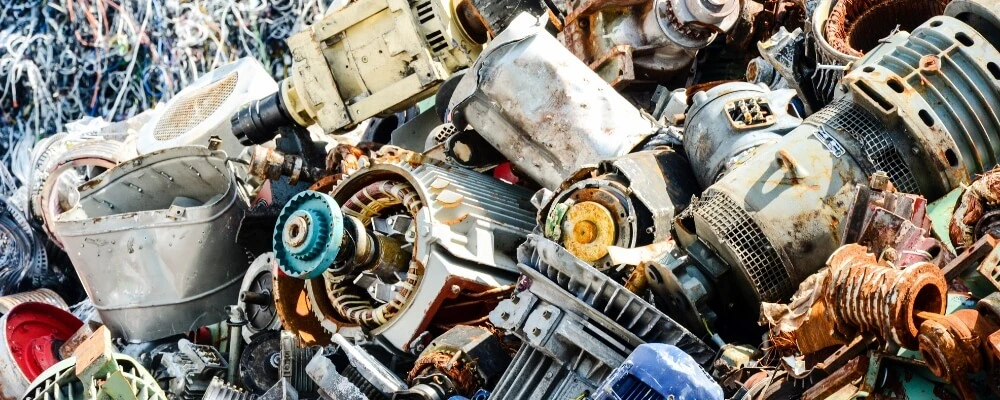
Different Examples Of Hazardous Waste
Hazardous waste refers to waste materials that pose a substantial risk to human health, the environment, or both. These wastes often exhibit characteristics like toxicity, flammability, reactivity, or corrosiveness. Here are some examples of hazardous waste:
1. Industrial Byproducts
The industrial sector is one of the most significant contributors to hazardous waste generation. Different industries produce a variety of byproducts, depending on their operations. One of the most notable is the petroleum industry. During petroleum refining, several chemical byproducts arise, with benzene being one of the most hazardous.
Benzene is a volatile, colorless liquid that has a sweet smell and is highly flammable. Exposure to benzene, a recognized carcinogen, can have severe health implications, including an increased risk of cancer, particularly leukemia.
2. Solvents
Solvents are ubiquitous in numerous industrial applications due to their ability to dissolve or suspend other materials without altering their properties. Some solvents, while useful, present significant health and environmental risks. Tetrachloroethylene, for instance, is a chlorinated solvent widely utilized in dry cleaning.
Though effective, it poses potential hazards like damage to the nervous system and liver and potential carcinogenic effects. Another such solvent is acetone, which, while not as toxic as other solvents, can irritate the skin, eyes, and respiratory system and is highly flammable.
3. Electronics Waste (e-waste)
With the rapid technological advancements of the past few decades, electronic devices have become an integral part of daily life. However, the swift obsolescence and turnover of devices like computers and smartphones result in significant e-waste.
These discarded devices can harbor a cocktail of toxic materials. Lead, often found in soldering, can damage the nervous system, while mercury, used in some screen backlights, can harm the brain and kidneys. Cadmium, a heavy metal in batteries, can be carcinogenic and harm the bones and kidneys.
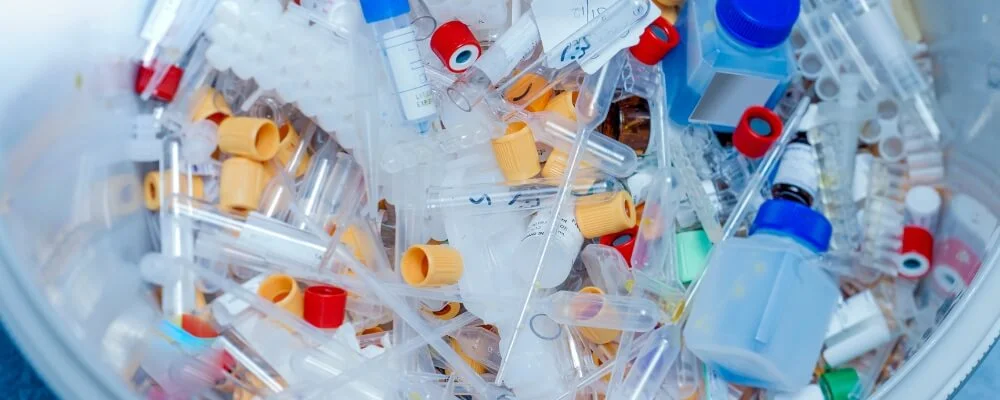
4. Batteries
Batteries have facilitated the revolution of portable electronics, but they come with environmental costs. Older batteries, especially, might contain heavy metals like lead, which can impair cognitive and physiological functions, particularly in children.
Cadmium, used in nickel-cadmium batteries, can accumulate in the human body and damage the kidneys and bones. Proper disposal and recycling are essential to prevent these metals from leaching into the environment.
5. Pesticides and Herbicides
Designed specifically to deter or kill pests and unwanted vegetation, these chemicals play a pivotal role in modern agriculture. However, their impact isn’t limited to pests and weeds. Many chemicals can be toxic to humans, wildlife, and beneficial insects.
Overexposure or improper handling can lead to various health issues, from skin and eye irritation to more severe effects on the nervous system or potential carcinogenicity. Moreover, their residue can remain in soil and water for extended periods, posing ongoing ecosystem risks.
6. Cleaning Agents
Cleaning agents are essential in both household and industrial settings. Industrial-grade cleaners often contain powerful chemicals to tackle tough grime and stains. However, some of these agents can be hazardous. Strong acids or bases used in cleaners can be corrosive, posing risks to skin, eyes, and respiratory systems.
Furthermore, many cleaning agents can release volatile organic compounds (VOCs) that contribute to indoor air pollution and can cause various health problems, from headaches to respiratory irritation.
7. Pharmaceutical Waste
With the past century’s medical advancements, many medications have been developed to treat various ailments. However, improper disposal of unused or expired medications presents unique challenges. These drugs can enter water systems, affecting aquatic life and potentially re-entering drinking water supplies, causing unintentional exposure to humans.
Some medications, particularly antibiotics, in the environment, can lead to the proliferation of antibiotic-resistant bacteria, a growing public health concern. Proper disposal methods are vital to mitigate these risks.
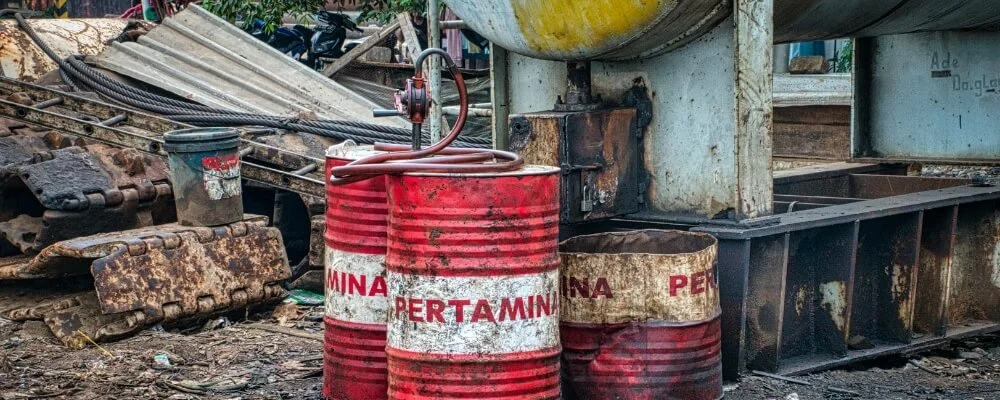
Proper Hazardous Waste Management
Proper hazardous waste management is crucial to protect human health, the environment, and the overall well-being of our planet. Effective management involves minimizing the generation of hazardous waste, ensuring safe storage, transportation, treatment, and disposal. Here are the key steps and principles for managing hazardous waste:
1. Source Reduction
At the forefront of hazardous waste management strategies is source reduction. This approach focuses on preventing the generation of waste before it even begins. Manufacturers can reduce the volume of waste produced or its toxicity by optimizing industrial processes.
In many instances, substituting raw materials with greener alternatives or improving production efficiencies can significantly reduce waste. This lessens the environmental burden and can lead to cost savings for businesses.
2. Recycling and Recovery
Recycling and recovery techniques harness the potential of repurposing waste or extracting valuable components. Solvents, extensively used in various industries, are prime candidates for recovery. With the right treatment, spent solvents can be purified and reused, saving resources and reducing the need for new solvent production.
Similarly, metals like lead or cadmium, which pose environmental hazards when discarded, can be reclaimed from waste streams and recycled into new products, reducing the demand for virgin materials.
3. Treatment
Treatment methods focus on transforming hazardous waste into less harmful forms. The risks associated with disposal or further handling can be significantly diminished by altering its chemical or physical properties. For instance, neutralizing acidic or alkaline wastes can ensure they don’t threaten soil or water systems. Similarly, detoxifying certain compounds can render them harmless, ensuring they don’t present health risks upon disposal.
4. Containment
Containment is a strategy that aims to restrict the migration of hazardous waste into the environment. Engineered containment structures, such as lined pits or ponds, act as barriers, ensuring that waste does not leach into soil or groundwater. These structures are often impermeable and are designed to hold waste for a specific duration, providing a temporary solution while long-term disposal or treatment methods are devised.

5. Disposal
In cases where waste cannot be recycled, treated, or contained indefinitely, disposal becomes necessary. Specially designed landfills equipped with safeguards like liners and leachate collection systems are employed to ensure hazardous constituents don’t escape into the environment. For particularly dangerous wastes, incineration might be the method of choice. Modern incinerators operate at high temperatures and under controlled conditions, ensuring complete combustion and reducing the release of harmful emissions.
6. Transportation
Given the risks associated with hazardous waste, its transportation demands special attention. Moving such waste requires containers that are resistant to leaks and spills. Special vehicles equipped with safeguards ensure that the waste remains contained in the event of accidents. Furthermore, transportation often requires thorough documentation to track the movement of hazardous materials, ensuring accountability at all stages.
7. Regulations
Effective management of hazardous waste wouldn’t be possible without robust regulatory frameworks. Governments across the globe have recognized the threats posed by improper waste management and have instituted regulations that dictate how much waste should be handled, transported, and disposed of. These rules aim to protect the environment, workers, communities, and ecosystems from potential harm. Compliance with these regulations isn’t just a legal obligation; it’s a critical component of environmental stewardship.
8. Public Awareness
Informing and educating businesses and the general populace about the risks and management strategies associated with hazardous waste can lead to more responsible behaviors. Public awareness campaigns can inspire industries to adopt greener practices, households to dispose of hazardous materials correctly, and communities to advocate for safer, more sustainable waste management solutions. Knowledge empowers individuals and organizations alike to make choices that benefit the environment and society.
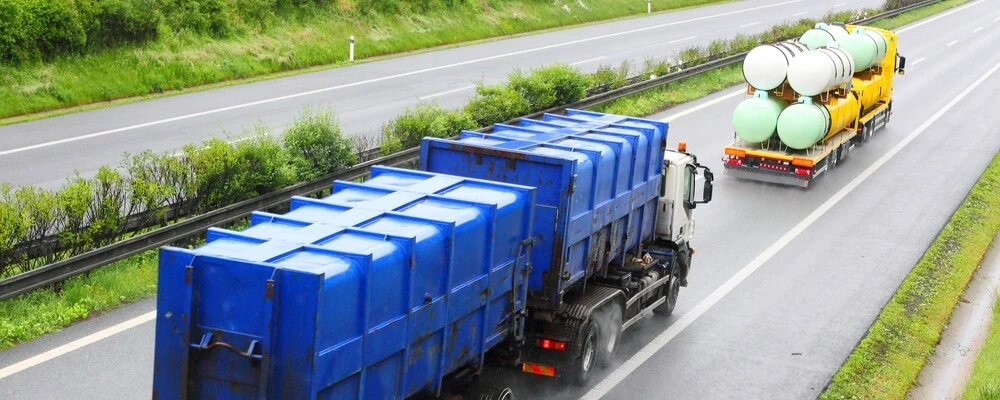
Hazardous Waste Transportation
Hazardous waste transportation is a critical phase in the management of dangerous materials. It involves the movement of these materials from the point of generation to treatment, recycling, or disposal facilities. Given the inherent risks of moving hazardous substances, this process is heavily regulated and requires specialized equipment, trained personnel, and strict protocols to ensure safety and environmental protection.
- Significance: Hazardous waste transportation is crucial because the waste generation site is often not equipped or suitable for its long-term treatment or disposal. Thus, the waste must be transported to facilities specifically designed to safely handle, treat, or dispose of such waste.
- Vehicles and Containers: Transporting hazardous waste demands specialized vehicles designed or retrofitted to safely transport hazardous materials. These vehicles should be equipped with containment features to manage spills or leaks. The waste is typically held in durable containers, drums, or tanks labeled and sealed to prevent leaks.
- Regulations: In many countries, the transportation of hazardous waste is strictly regulated by government agencies. In the U.S., for example, the Environmental Protection Agency (EPA) and the Department of Transportation (DOT) set forth regulations for hazardous waste transportation. These regulations encompass the classification of hazardous materials, container specifications, labeling requirements, and manifest systems to track the waste from its origin to its final destination.
- Training: Drivers and personnel involved in transportation must undergo specialized training. This training ensures they know the risks, can handle emergencies, and understand the regulatory requirements for transporting hazardous materials.
- Emergency Response: Given the potential risks, emergency response plans must be in place. In the event of an accident, spill, or leak, there are protocols to ensure swift containment and cleanup to minimize environmental damage and health risks. Drivers and transport personnel are typically trained in basic response measures, and specialized teams can be deployed for significant incidents.
- Documentation: A vital component of hazardous waste transportation is documentation. The manifest system is a tracking method used to ensure that hazardous waste is transported and disposed of properly. It contains information about the type of waste, its quantity, its point of origin, and its intended destination. This document accompanies the waste throughout its journey and is signed off at each transfer point, ensuring a clear chain of custody.
- Challenges: Transporting hazardous waste presents several challenges. Ensuring safety amid varying road and weather conditions, navigating regulatory differences between regions or countries, and maintaining public confidence in the safe movement of these materials are all ongoing challenges in this field.
Hazardous waste transportation is a complex but essential aspect of waste management. It demands a harmonious integration of equipment, training, regulations, and oversight to ensure that these materials are moved safely from their point of generation to their final treatment or disposal destination.
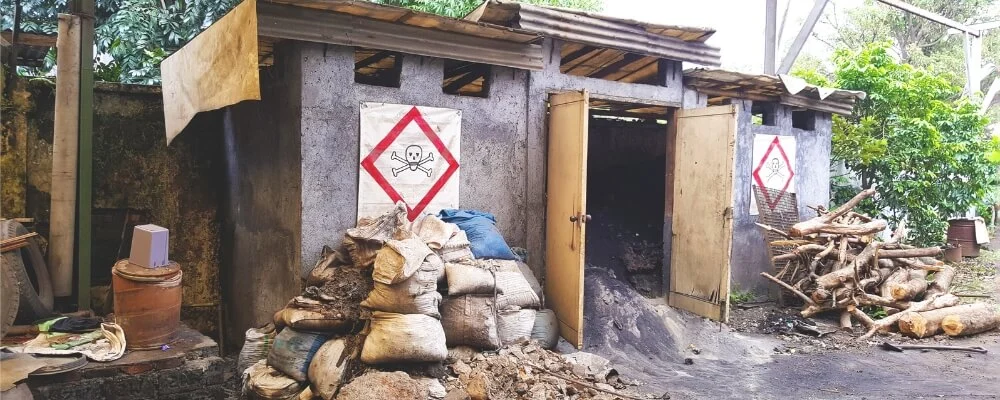
Impact Of Hazardous Waste On Environment
Hazardous waste can pose significant environmental threats, affecting the air, water, soil, and living organisms. If not managed and disposed of properly, these wastes can result in long-term environmental harm and harm to human health. Here’s an overview of the impact of hazardous waste on the environment:
- Soil Contamination: Hazardous waste can seep into the ground, especially if disposed of in unsuitable locations, leading to soil contamination. Polluted soil can affect plant growth and introduce harmful chemicals into the food chain. Over time, this degrades the soil quality, making it less fertile and impacting the broader ecosystem, affecting everything from insects to larger animals that depend on the soil for sustenance.
- Water Pollution: One of the most concerning impacts of hazardous waste is the contamination of groundwater and surface water sources. Leachate from waste can seep into underground water tables or flow into rivers and lakes. Contaminated water poses direct risks to aquatic life and can enter the human food chain by consuming affected fish and other aquatic organisms. Moreover, contaminated water sources can render water unsafe for drinking and agriculture, leading to various health issues in humans and animals.
- Air Pollution: When exposed to the environment, certain types of hazardous waste can release toxic fumes or gases into the atmosphere. For instance, incinerating specific hazardous wastes without proper controls can emit harmful compounds and particulates. These pollutants can degrade air quality, harm wildlife, and pose respiratory threats to humans.
- Bioaccumulation and Biomagnification: Some hazardous chemicals, known as bioaccumulation, can accumulate in living organisms. Over time, as smaller organisms are consumed by larger ones, these chemicals can become more concentrated in the bodies of top predators in a process called biomagnification. This poses significant risks to these animals and any humans that may consume them.
- Habitat Disruption: Improper disposal sites or spills can lead to habitat destruction. Hazardous chemicals can alter the natural environment, making it unsuitable for native plants and animals. This can lead to a decrease in biodiversity and disrupt the balance of local ecosystems.
- Alteration of Ecological Processes: Some hazardous wastes can alter the basic ecological processes. For instance, certain chemicals can change the pH level of water bodies, affecting the life forms that can thrive in those conditions. Others might impact the nitrogen or carbon cycles, fundamental to many ecosystems.
- Long-term Environmental Persistence: Many hazardous substances are not biodegradable and can persist in the environment for extended periods. Their long-term presence means that their risks are not just immediate but can continue for generations, affecting future wildlife populations and potentially leading to prolonged health risks for humans.
In summary, hazardous waste can have wide-reaching and long-lasting environmental impacts. Its potential to contaminate the air, water, and soil makes its proper management and disposal critical to preserving ecological balance and safeguarding public health. Proper awareness, stringent regulations, and advances in waste treatment technologies are essential for mitigating these adverse effects.
Conclusion
In the realm of environmental stewardship, understanding hazardous waste is paramount. These materials, characterized by their potential to harm human health and the environment, are a byproduct of our modern society and a challenge we must address urgently.
Through a deep dive into its definition and real-world examples, we’ve underscored the pervasive nature of hazardous waste in various sectors, from industrial processes to everyday products. But knowledge is only the first step. Effective management strategies, ranging from source reduction to stringent regulations, are our weapons against the threats posed by these wastes.
As we conclude, it’s evident that the issue of hazardous waste is not just for scientists or policymakers to grapple with. Still, a collective responsibility. By staying informed and advocating for robust waste management practices, each of us can contribute to a safer, healthier environment for current and future generations.
Also Read: What Is HAZMAT? Meaning, Examples, Certification, And Training

